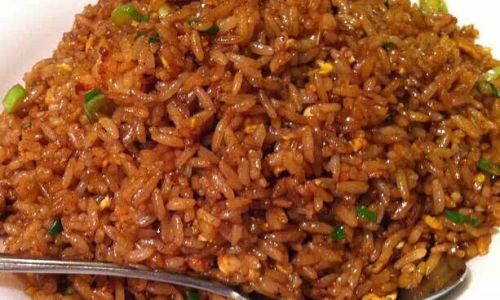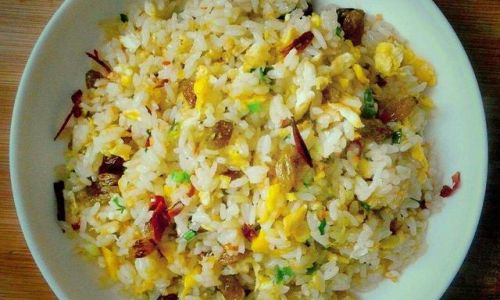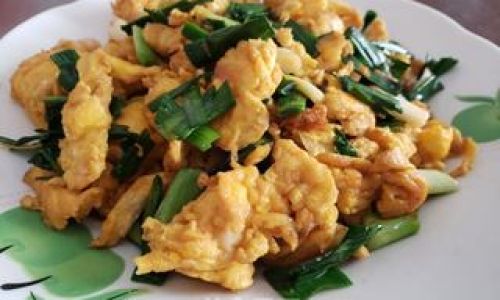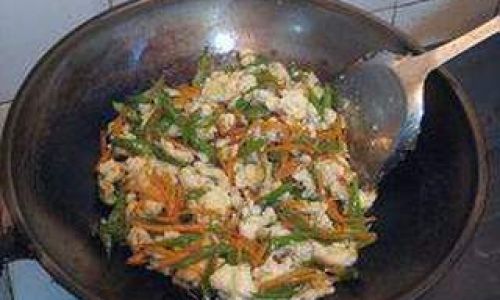Introduction
Fried rice with a crispy rice crust, often referred to as guoba fan or “锅巴饭” in Chinese cuisine, is a beloved dish that combines the comforting flavors of stir-fried rice with the irresistible crunch of a golden, caramelized rice crust. This dish, which originated in China, has gained popularity worldwide for its balance of textures and flavors—soft, fluffy rice mixed with savory ingredients, all crowned by a layer of crackling crust. Whether you’re a seasoned home cook or a novice in the kitchen, mastering this recipe will elevate your culinary repertoire and impress dinner guests. In this comprehensive guide, we’ll explore the history of this dish, break down the essential ingredients, and provide detailed, foolproof steps to achieve restaurant-quality results. By the end, you’ll understand how to transform simple leftovers into a gourmet meal that celebrates both tradition and innovation.
The Origins and Cultural Significance
The concept of crispy rice, or guoba, dates back centuries in Chinese culinary traditions. Initially, it was a practical way to use leftover rice, transforming stale grains into a crunchy treat. Over time, chefs began to intentionally create this texture by pressing rice onto the sides of woks, where it would fry until golden and crisp. Today, guoba fan is enjoyed in households and restaurants alike, often served with rich sauces or savory toppings that contrast beautifully with the crust’s crunch. The dish embodies the Chinese philosophy of wu wei, or effortless action, where simplicity and resourcefulness yield extraordinary results.
Ingredients You’ll Need
To create authentic fried rice with a crispy crust, gather the following ingredients. Quantities are flexible, allowing you to adjust based on personal preference or dietary needs:

- Cooked Rice (2–3 cups): Ideally, use day-old rice. Freshly cooked rice tends to clump, making it harder to achieve the desired texture.
- Protein (optional): 1 cup of diced chicken, shrimp, tofu, or eggs.
- Vegetables: 1 cup of mixed vegetables (peas, carrots, bell peppers, corn, or mushrooms).
- Aromatics: 2–3 garlic cloves (minced), 1-inch ginger (grated), and 2–3 green onions (chopped).
- Soy Sauce: 2–3 tablespoons (use low-sodium if preferred).
- Oyster Sauce (optional): 1 tablespoon for added umami.
- Sesame Oil: 1 teaspoon for fragrance.
- Cooking Oil: 2–3 tablespoons (neutral oil like vegetable or canola).
- Salt and Pepper: To taste.
- For the Crispy Crust: 1–2 tablespoons of additional oil and a non-stick wok or skillet.
Step-by-Step Cooking Process
Preparing the Rice
The foundation of great fried rice is perfectly cooked, slightly dried grains. If using fresh rice, spread it on a baking sheet and refrigerate for at least 1 hour to remove excess moisture. Day-old rice works best, as the grains are firmer and less sticky.
Sautéing Aromatics
Heat 1 tablespoon of oil in a wok or large skillet over medium-high heat. Add minced garlic and ginger, stirring for 30 seconds until fragrant. Avoid burning the aromatics, as this will impart bitterness.
Cooking the Protein (If Using)
Push the aromatics to one side of the wok and add your chosen protein. For example, scramble eggs until set, then chop into small pieces. For diced chicken or shrimp, cook until opaque and fully cooked through. Remove the protein from the wok and set aside.
Stir-Frying Vegetables
Add the mixed vegetables to the wok, stir-frying for 2–3 minutes until tender-crisp. Season lightly with salt and pepper. Remove and set aside with the protein.
Frying the Rice
Increase the heat to high and add another tablespoon of oil. Add the rice, breaking up any clumps with a spatula. Spread the rice evenly across the wok’s surface to maximize contact with the heat. Let it cook undisturbed for 2–3 minutes to develop a light crust on the bottom.
Adding Flavor
Drizzle soy sauce and oyster sauce (if using) over the rice, tossing gently to coat evenly. Return the cooked protein and vegetables to the wok, mixing thoroughly. Adjust seasoning with salt, pepper, or a splash of soy sauce.
Creating the Crispy Crust
Here’s the secret to perfect guoba:
- Option 1 (Wok Method): Push the rice mixture to the sides of the wok, leaving a space in the center. Add 1–2 tablespoons of oil to the exposed area and heat until shimmering. Carefully press the rice into the oil, forming a flat, compact layer. Let it fry for 3–4 minutes without stirring until golden and crisp. Use a spatula to loosen and flip the crust in sections.
- Option 2 (Oven Method): For a hands-off approach, transfer the rice mixture to an oven-safe skillet. Press it firmly into an even layer and drizzle with oil. Broil on high for 5–7 minutes, watching closely to prevent burning, until the top is crispy.
Final Touches
Drizzle sesame oil over the dish and garnish with chopped green onions. Serve immediately to preserve the crust’s crunch.

Tips for Perfecting the Dish
- High Heat is Key: Stir-frying requires intense heat to prevent steaming and ensure proper caramelization.
- Don’t Overcrowd the Pan: Cook in batches if necessary to avoid overcrowding, which leads to soggy rice.
- Customize Your Crust: Experiment with spices like five-spice powder or chili flakes for added depth.
- Leftover Innovation: Use this recipe to repurpose takeout rice or leftover proteins.
Variations to Explore
- Vegetarian Delight: Substitute tofu or tempeh for protein and add edamame or spinach.
- Spicy Kick: Incorporate gochujang or Sriracha into the sauce for a fiery twist.
- Seafood Extravaganza: Use shrimp, squid, or crab meat with a dash of fish sauce.
- Cheesy Fusion: Top with grated Parmesan or cheddar during the final broil for a melty finish.
Serving Suggestions
Pair your crispy rice dish with:
- Pickled Vegetables: A tangy cucumber or daikon salad cuts through the richness.
- Miso Soup: A steaming bowl complements the dish’s textures.
- Fresh Herbs: Sprinkle cilantro or basil for a vibrant finish.
Health and Nutritional Benefits
While fried rice is often perceived as indulgent, it can be part of a balanced diet. Rice provides carbohydrates for energy, while vegetables add fiber and vitamins. Using lean proteins like chicken or tofu boosts the dish’s protein content. To reduce calories, use minimal oil and load up on veggies.
Common Mistakes to Avoid
- Using Wet Rice: Fresh rice leads to mushiness. Always dry it first.
- Overmixing: Stir too vigorously, and you’ll break the grains, destroying texture.
- Low Heat: Insufficient heat results in steamed rice instead of crispy perfection.
- Skipping Seasoning: Underseasoning leaves the dish bland. Taste and adjust as you go.
Storing Leftovers
Leftover guoba fan can be refrigerated in an airtight container for up to 3 days. Reheat in a skillet with a splash of oil to revive the crust’s crunch. Avoid microwaving, as it softens the texture.
Conclusion
Fried rice with a crispy crust is more than a meal—it’s a testament to the magic of simplicity. By mastering the interplay of heat, texture, and flavor, you’ll create a dish that honors tradition while inviting creativity. Whether you’re feeding a family or hosting a dinner party, this recipe guarantees a memorable experience. So, grab your wok, fire up the stove, and embark on a culinary journey that turns humble ingredients into a symphony of crunch and comfort. Bon appétit!





0 comments